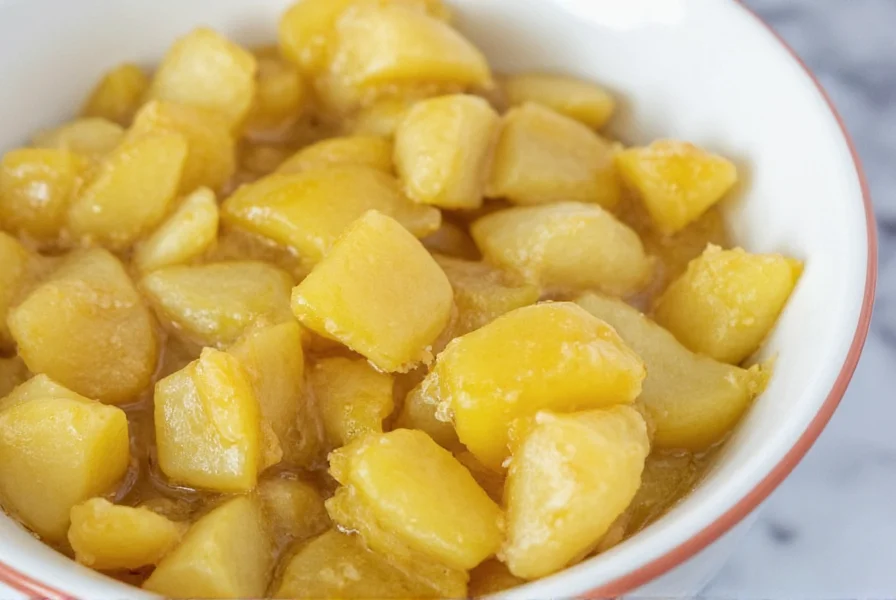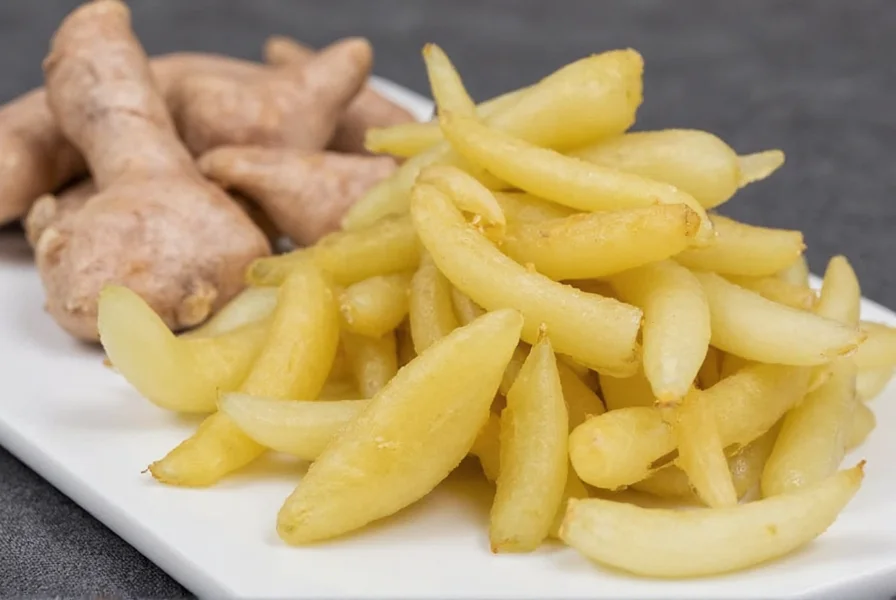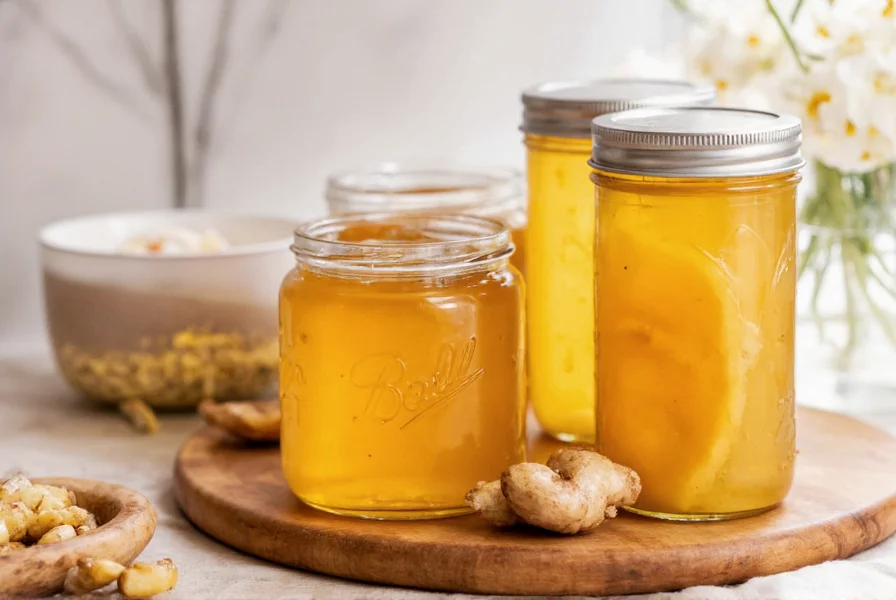Making homemade pickled ginger is simpler than most people realize and yields far superior results compared to store-bought versions. This traditional Japanese condiment, known as gari, serves as a palate cleanser between different types of sushi. When prepared correctly, your pickled ginger will have a delicate sweet-tangy flavor with just the right amount of bite, maintaining a crisp texture that complements delicate fish perfectly.
Unlike commercial varieties that often contain artificial colors and preservatives, homemade pickled ginger lets you control the ingredients and achieve that perfect balance of sweetness and acidity. The process requires minimal equipment and active preparation time, though proper marinating is essential for developing the characteristic flavor profile that enhances your sushi experience.
Understanding Pickled Ginger Varieties
Before diving into the recipe, it's important to distinguish between different types of pickled ginger:
| Type | Characteristics | Best Used With |
|---|---|---|
| Gari (sushi ginger) | Thinly sliced young ginger, pale pink, mildly sweet | Fresh sushi, delicate fish |
| Beni shoga | Red pickled ginger, stronger flavor, vibrant color | Yakitori, okonomiyaki, rice bowls |
| Plain pickled ginger | No added coloring, more pronounced ginger flavor | General cooking, medicinal uses |
This guide focuses specifically on creating authentic gari, the traditional sushi accompaniment that requires young ginger for its tender texture and subtle flavor.
Essential Ingredients for Perfect Pickled Ginger
The magic of excellent pickled ginger lies in using the right ingredients in proper proportions. Here's what you'll need for a standard batch:
- Young ginger root (4 ounces) - Look for "spring ginger" or "baby ginger" with thin, moist skin
- Rice vinegar (1 cup) - Provides the essential mild acidity
- Granulated sugar (1/4 cup) - Adjust to taste depending on desired sweetness
- Sea salt (1 teaspoon) - Enhances flavor and acts as a preservative
- Beet slice (optional, 1/8 inch thick) - For natural pink coloring (authentic gari gets its color from young ginger's natural pigments reacting with vinegar)
Using young ginger is crucial for authentic sushi ginger. Mature ginger has a stronger, spicier flavor and tougher fibers that won't achieve the delicate texture of proper gari. If you can't find young ginger, look for it at Asian markets in early spring when it's most abundant.

Step-by-Step Preparation Guide
Follow these detailed instructions for perfect pickled ginger every time:
- Prepare the ginger: Peel the young ginger using a spoon (this removes just the thin outer layer without wasting flesh). Thinly slice against the grain using a sharp knife or mandoline (approximately 1/16 inch thick).
- Blanch the ginger: Bring 2 cups of water to boil. Add ginger slices and boil for exactly 30 seconds. Immediately transfer to ice water to stop cooking. This step removes excess sharpness while preserving texture.
- Prepare the pickling solution: In a small saucepan, combine rice vinegar, sugar, and salt. Heat over medium until sugar dissolves completely (do not boil).
- Combine ingredients: Place blanched ginger and optional beet slice in a clean glass jar. Pour warm pickling solution over ginger, ensuring complete coverage.
- Cool and store: Let cool to room temperature, then seal tightly. Refrigerate for at least 24 hours before using. The ginger will gradually turn pale pink during this time.
Pro Tips for Best Results
Professional sushi chefs follow these techniques to perfect their pickled ginger:
- Slicing thickness matters - Too thick and it won't absorb flavors properly; too thin and it becomes mushy. Aim for paper-thin slices.
- Don't skip the blanching step - This crucial process tames ginger's sharp heat while maintaining crispness.
- Vinegar quality is essential - Use unseasoned rice vinegar; seasoned varieties contain added sugar that throws off the balance.
- Patience with marinating - While usable after 24 hours, flavor continues improving for up to two weeks.
- Storage technique - Always use clean utensils when removing ginger to prevent contamination.
Troubleshooting Common Issues
Even experienced cooks encounter these pickled ginger challenges:
- Ginger remains too spicy: You likely used mature ginger instead of young ginger. Blanch for 10 seconds longer next time.
- Not turning pink: Authentic pale pink color develops naturally from young ginger's anthocyanins reacting with vinegar. Adding a tiny beet slice can enhance color.
- Too sweet: Reduce sugar by 1-2 tablespoons in your next batch. Remember that sweetness mellows slightly during marinating.
- Mushy texture: Over-blanching or using mature ginger causes this. Keep blanching time precise and source young ginger.

Storage and Shelf Life
Properly stored homemade pickled ginger maintains quality for:
- Refrigerator: 3-4 weeks when kept in an airtight container submerged in pickling liquid
- Freezer: Not recommended as texture deteriorates
Always use clean utensils when removing ginger from the jar to prevent bacterial contamination. The pickling liquid can be reused for one additional batch by refreshing with equal parts vinegar and sugar.
Delicious Variations to Try
Once you've mastered the basic recipe, experiment with these authentic variations:
- Lemon-infused ginger: Add one thin lemon slice to the pickling liquid for citrus notes
- Spiced ginger: Include one star anise pod for subtle licorice undertones
- Less sweet version: Reduce sugar to 3 tablespoons for a more traditional Japanese preparation
- Vinegar alternative: Substitute 1/4 cup of the rice vinegar with apple cider vinegar for complexity
Frequently Asked Questions
Can I make pickled ginger without sugar?
While traditional gari requires sugar for authentic flavor balance, you can reduce the sugar to 2 tablespoons for a less sweet version. Completely omitting sugar creates an unbalanced, overly acidic product that doesn't resemble proper sushi ginger.
Why does my homemade pickled ginger not turn pink?
Authentic pale pink color comes from young ginger's natural pigments reacting with vinegar. If your ginger remains yellow, you likely used mature ginger. Adding a thin slice of raw beet to the pickling liquid provides natural coloring without affecting flavor.
How thin should I slice ginger for pickling?
For authentic sushi ginger, slice to approximately 1/16 inch thickness. This allows proper flavor absorption while maintaining texture. A mandoline slicer works best, but a very sharp knife can achieve similar results with careful technique.
Can I use white vinegar instead of rice vinegar?
Rice vinegar's mild acidity and subtle sweetness are essential for authentic flavor. White vinegar creates an overly harsh, one-dimensional taste. If rice vinegar is unavailable, substitute with a combination of 3/4 cup apple cider vinegar and 1/4 cup water.
How long does homemade pickled ginger last?
When properly stored in an airtight container in the refrigerator, homemade pickled ginger maintains optimal quality for 3-4 weeks. The flavor continues developing for up to two weeks before gradually declining. Always ensure ginger remains submerged in the pickling liquid.











 浙公网安备
33010002000092号
浙公网安备
33010002000092号 浙B2-20120091-4
浙B2-20120091-4